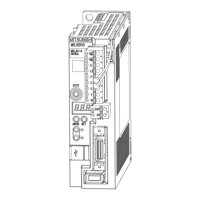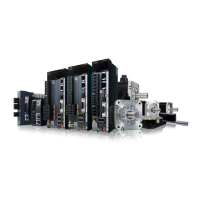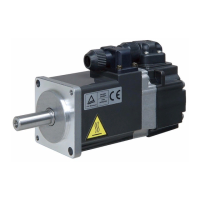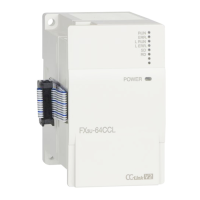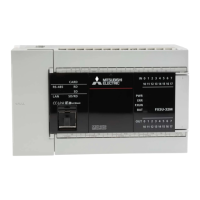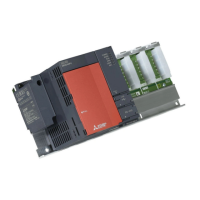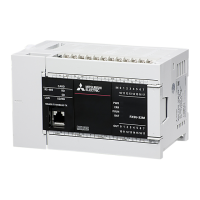11. OPTIONS AND AUXILIARY EQUIPMENT
11 - 18
Note 1.
2.
3.
4.
5.
6.
7.
8.
9.
10.
11.
12.
13.
For power supply specifications, refer to section 1.3.
For the servo amplifier of 7 kW, always disconnect the lead wire of built-in regenerative resistor, which is connected to the P+
and C terminals.
Always connect between P3 and P4 terminals. (factory-wired) Use either the power factor improving DC reactor or the power
factor improving AC reactor. When using the power factor improving DC reactor, refer to section 11.11.
Connect P/+ and N/- terminals of the brake unit to a correct destination. Incorrect connection destination results in servo
amplifier and brake unit malfunction.
Contact rating: 1b contact, 110 V AC_5 A/220 V AC_3 A
Normal condition: TH1-TH2 is conducting. Abnormal condition: TH1-TH2 is not conducting.
Contact rating: 230 V AC_0.3 A/30 V DC_0.3 A
Normal condition: B-C is conducting/A-C is not conducting. Abnormal condition: B-C is not conducting/A-C is conducting.
Do not connect more than one cable to each P+ to N- terminals of the servo amplifier.
Always connect BUE and SD terminals. (factory-wired)
Connect MSG and SD terminals of the brake unit to a correct destination. Incorrect connection destination results in servo
amplifier and brake unit malfunction.
For the cable to connect the terminal block and the P+ and N- terminals of the servo amplifier, use the cable indicated in (3)(b)
of this section.
Depending on the main circuit voltage and operation pattern, bus voltage decreases, and that may cause the forced stop
deceleration to shift to the dynamic brake deceleration. When dynamic brake deceleration is not required, slow the time to turn
off the magnetic contactor.
Configure up a circuit to turn off EM2 when the main circuit power is turned off to prevent an unexpected restart of the servo
amplifier.
When wires used for L11 and L21 are thinner than wires used for L1, L2, and L3, use a molded case circuit breaker.
(2) Connection instructions
The cables between the servo amplifier and the brake unit, and between the resistor unit and the brake
unit should be as short as possible. Always twist the cable longer than 5 m (twist five times or more per
one meter). Even when the cable is twisted, the cable should be less than 10 m. Using cables longer
than 5 m without twisting or twisted cables longer than 10 m, may result in the brake unit malfunction.
Servo amplifie
Brake unit
5 m or less 5 m or less
Servo amplifie
Brake unit
10 m or less 10 m or less
P+
N-
P/+
N/-
P
PR
P
PR
P/+
N/-
P
PR
P
PR
Twist Twist
Resistor unit Resistor unit
P+
N-
(3) Cables
(a) Cables for the brake unit
For the brake unit, HIV cable (600 V grade heat-resistant PVC insulated wire) is recommended.
1) Main circuit terminal
Crimp
terminal
Wire size
N/-
㸪
P/+
㸪
PR
㸪
Brake unit
Main
circuit
terminal
screw
size
N/-
㸪
P/+
㸪
PR
㸪
Tightenin
g torque
[N•m]
HIV wire
[mm
2
]
AWG
200 V
class
FR-BU2-15K M4 5.5-4 1.5 3.5 12
FR-BU2-30K M5 5.5-5 2.5 5.5 10
N/- P/+ PR
Terminal block
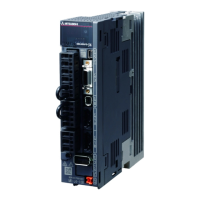
